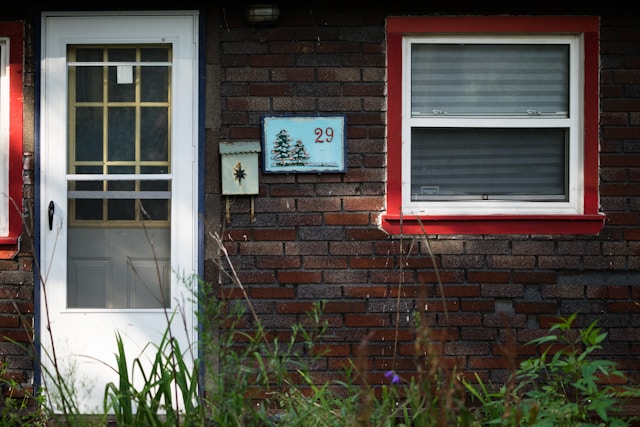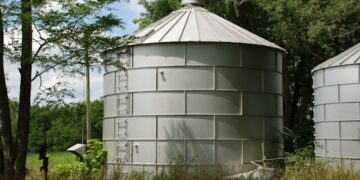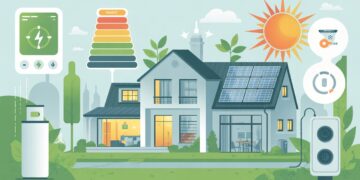Windows are more than just architectural features. They play a critical role in your home’s comfort, energy consumption, and even monthly utility costs. In 2025, energy-efficient windows have become a top priority for homeowners seeking to lower energy bills and reduce their environmental impact. Whether you’re renovating an old home or building a new one, upgrading to energy-saving windows can deliver long-term benefits.
From improved insulation to better indoor comfort and reduced carbon footprint, energy-efficient windows are a smart investment. In this guide, we’ll break down how these windows work, what features to look for, and how to choose the best option for your climate and budget.
How Energy-Efficient Windows Work
Energy-efficient windows are designed to minimize heat transfer, keeping your home warmer in the winter and cooler in the summer. They work through a combination of insulating glass units (IGUs), gas fills, special coatings, and advanced frame materials.
A common feature of energy-saving windows is the use of Low-E (low emissivity) coatings, which reflect heat and UV rays while still allowing natural light to enter. These coatings are nearly invisible but play a huge role in regulating indoor temperatures. Most windows also include multiple panes typically double-pane or triple-pane separated by insulating gases like argon or krypton to further reduce heat loss.
Key Energy Performance Ratings Explained
When evaluating energy-efficient windows, it’s essential to understand the key performance metrics that determine how well a window will perform in your home:
-
U-Factor: Measures how well a window prevents heat from escaping. Lower U-factors indicate better insulation, which is especially important in colder climates.
-
Solar Heat Gain Coefficient (SHGC): Indicates how much solar radiation is allowed through the window. A lower SHGC means less solar heat gain, ideal for hot climates.
-
Visible Transmittance (VT): Measures how much visible light passes through the window. Higher VT values allow more natural light, reducing the need for artificial lighting.
-
ENERGY STAR Certification: Windows that meet ENERGY STAR criteria are independently tested and certified to deliver high energy performance for specific climate zones.
By checking these ratings on the National Fenestration Rating Council (NFRC) label, you can choose windows that align with your energy-efficiency goals.
Types of Energy-Efficient Windows
There are several types of energy-efficient windows available today, each with unique features suited to different climates and preferences.
Double-Pane vs. Triple-Pane Windows
Double-pane windows have two layers of glass with an air or gas-filled space in between, providing solid insulation. Triple-pane windows add an extra layer for even greater performance, making them ideal for regions with extreme cold or noise concerns.
Low-E Glass
Low-E glass windows feature a thin metallic coating that reflects heat and UV rays. They help maintain a comfortable indoor temperature without sacrificing natural light, making them one of the most popular upgrades in window technology.
Gas-Filled Windows
Windows filled with argon or krypton gas offer better thermal insulation than air-filled ones. These inert gases are denser than air, reducing heat transfer and improving overall efficiency.
Window Frame Materials
The frame also plays a major role in a window’s energy performance. Common materials include:
-
Vinyl: Affordable, low maintenance, and good thermal performance.
-
Wood: Excellent insulation but requires regular maintenance.
-
Fiberglass: Strong, energy-efficient, and resistant to weathering.
-
Aluminum-clad: Durable and modern, often used in commercial-style homes but may need thermal breaks for improved insulation.
Choosing the Right Windows for Your Climate
Your local climate should heavily influence your choice of energy-efficient windows. What works in a cold northern state may not be ideal in a hot and humid region.
-
Cold Climates: Look for windows with a low U-factor to reduce heat loss. Triple-pane windows and high SHGC ratings are often beneficial to capture passive solar heat.
-
Hot Climates: Prioritize a low SHGC to minimize solar heat gain. Low-E coatings that reflect infrared light can help keep your home cooler.
-
Mixed Climates: Choose windows with balanced U-factor and SHGC ratings to adapt to both heating and cooling needs throughout the year.
ENERGY STAR windows are now categorized by climate zones, making it easier to find a window optimized for your location.
Cost Considerations and ROI
Installing energy-efficient windows is an investment, but the long-term savings are significant. Depending on your home and location, replacing single-pane windows with ENERGY STAR-rated models can save up to $500 annually on heating and cooling costs.
Window replacement cost can range from $300 to $1,200 per window, depending on size, material, and glazing. While triple-pane windows and fiberglass frames cost more upfront, they typically offer higher energy savings and better noise reduction.
Additionally, many homeowners can take advantage of federal or local tax incentives and rebates in 2025. Be sure to check current energy-efficiency programs in your area, which can help offset initial costs.
Installation and Maintenance Tips
Even the best energy-efficient windows won’t perform well if they’re poorly installed. A professional installation ensures proper sealing, alignment, and insulation, all of which are crucial for optimal performance.
Once installed, keep your windows in top shape with regular maintenance:
-
Clean tracks and glass with non-abrasive cleaners
-
Check for and reseal any air leaks or damaged weatherstripping
-
Inspect frames annually for warping, rot, or moisture damage
Proper care not only extends the lifespan of your windows but also preserves their energy-saving capabilities.
Conclusion
Energy-efficient windows are one of the most impactful upgrades you can make to your home. They improve comfort, reduce your energy usage, increase home value, and contribute to a more sustainable lifestyle. With the wide variety of options available in 2025—from double-pane to Low-E glass and gas-filled systems there’s a solution for every home and budget.









